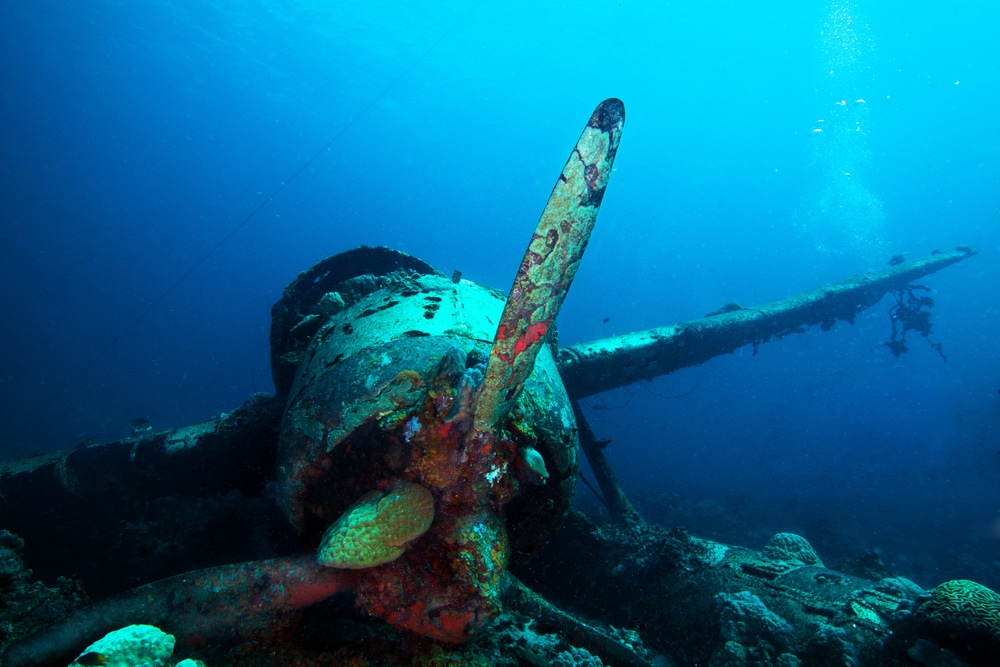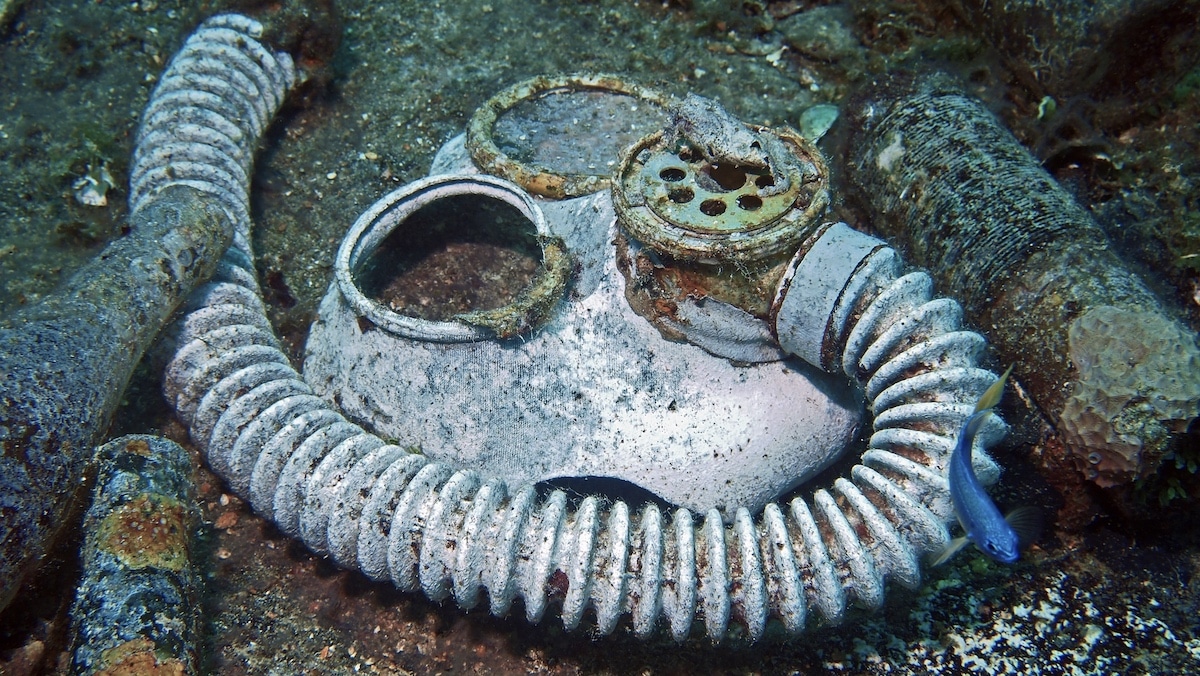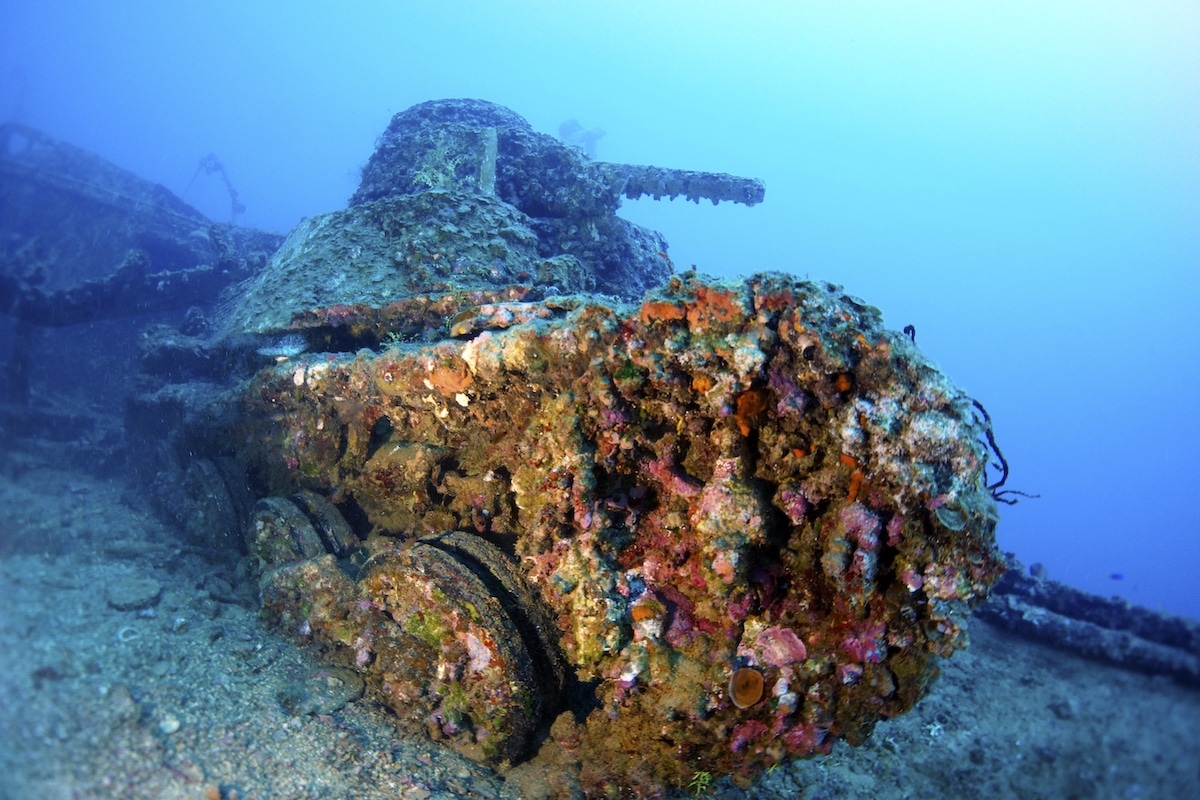News
Unmissable Micronesia Wrecks

Micronesia scuba diving has everything a diver could wish for; from thriving reefs to coral-encrusted WWII wrecks, plenty of large marine life and tiny colourful critters. Palau and Truk Lagoon are the places to go if you’re a fan of wreck diving, with numerous wrecks on offer.
There are a variety of liveaboards to choose from at both destinations. The beautiful Palau Siren is an understandably popular choice with its luxurious accommodation. The SS Thorfinn is great for technical divers and has two special technical diving packages; the Rebreather Plan and Truk Tek Unlimited.
Truk lagoon can be dived all year, thanks to its sheltered nature, and Palau has three main diving seasons:
- The high season from December to March, offering flat seas and dry weather
- The shoulder months of April, July, August, October and November, when there is more wind and rainfall
- The low months of May, June and September which offer fewer visitors and the lowest prices
Here is our pick of the top Micronesia wrecks to explore:
PALAU
Palau is one of Micronesia’s main dive destinations and there is something for all interests; with reef dives, drop-offs, drift dives, caves and multiple wrecks to explore. It is best to visit Palau as an advanced diver, with drift and wreck diving experience, to make the most of the dive sites.
IRO MARU
What is it?
This Japanese Navy oiler sank in 1944 and is 143 meters long, with the deck at 25 meters below the surface.
Why dive this wreck?
The Iro Maru is an impressive sight, still sitting upright and giving a complete view of the ship. The deck is covered with clams, oysters and critters and the ship is home to plentiful corals, including black coral trees. There are numerous fish and an array of WWII artifacts, including some live ammunition – so be sure not to touch anything on the wreck. There are two large guns; one on the stern and the other on the bow.
Who is this wreck suitable for?
The Iro Maru sits in an area with no currents, making it easily accessible, and it is within recreational dive limits. Wreck penetration is possible at this wreck.
AMATSU MARU
What is it?
This oil tanker came into service just 4 months before being sunk. She is the largest shipwreck in Palau, with a total length of 159 meters.
Why dive this wreck?
This huge shipwreck is also known as the Black Coral Wreck, as the hull is covered in black coral trees. This unique sight is great for photography. The interior still has electrical and radio equipment and you can see damage on the stern from the explosions that sunk it.
Who is this wreck suitable for?
The Amatsu Maru lies at 40 meters depth, with the deck at 30 meters, and is best suited to advanced divers. Wreck penetration is possible.
JAKE SEAPLANE
What is it?
The Jake Seaplane is one of the most well-known wrecks and was only discovered in 1994, by a fisherman who spotted it from the surface. It is a WWII Navy Seaplane and is 11 meters long.
Why dive this wreck?
The Jake Seaplane sits upright on a coral head and is mostly intact. The wreck is covered in corals, and there are plenty of coral species to spot on the wreck and in the surrounding area.
Who is this wreck suitable for?
Sitting upright at around 15 meters depth, the Jake Seaplane is easily accessible and suitable for less experienced divers.
TRUK
Truk Lagoon is known for having more than 48 wreck diving sites and waters up to 100 meters deep. It is one of the best places for wreck diving and offers great opportunities for recreational and technical diving amongst World War II wrecks.
FUJIKAWA MARU
What is it?
This cargo and passenger ship had been sent to Truk lagoon for repairs in 1944 when it was caught up in Operation Hailstone and sunk after being hit by a torpedo. It is one of the most popular wreck dives in the area and she is 133 meters long.
Why dive this wreck?
This is another impressive wreck, with the boat sitting upright, and the outside of the wreck covered in corals and sponges. There is a large bow gun and two fighter aircrafts, and the engine room and tool rooms are a must. You can find many artefacts on this wreck, including artillery. Keep your eyes open for large schools of jacks and barracuda, plus grey reef sharks, whilst you dive there.
Who is this wreck suitable for?
The depth range of 5 to 35 meters, with the deck at 18 meters, makes the Fujikawa Maru ideal for all dive experience levels.
SANKISAN MARU
What is it?
This 112-meter Japanese army cargo ship was strafed, leading to a fire and explosions that ripped the ship apart. There is a huge 152-meter diameter crater with large metal sections lying around.
Why dive this wreck?
This is a great open wreck where you can see holds filled with machine gun and rifle shells, plus truck frames, aircraft engines and propellers. The aft is missing but the stern sits upright 100 meters away from the rest of the ship. The mast rising to the surface is covered in corals and there is also plenty of coral cover on the deck. It offers some of the best soft coral cover in the lagoon.
Who is this wreck suitable for?
The average depth is 24 meters, with a maximum depth of 27 meters, making this wreck suitable for advanced divers.
SAN FRANCISCO MARU
What is it?
This passenger cargo ship is Truk’s most famous deep dive, lying at a depth of around 63 meters.
Why dive this wreck?
The San Francisco Maru contains mines, bombs, tanks and trucks. She is a popular choice in the 40 to 60-meter (131 to 196 feet) depth range and the four cargo holds contain aircraft bombs, artillery shells, tanker trucks, a flatbed truck, and torpedo warheads.
Who is this wreck suitable for?
This wreck is a favourite among technical divers.
SHINKOKU MARU
What is it?
The Shinkoku Maru is around 152 meters long and was originally built as an oil tanker, later converted to a fleet oiler. She survived two days of attacks and two aerial torpedo strikes, until finally sinking.
Why dive this wreck?
This wreck is fantastic for night diving and has plentiful soft corals and hydroids that emerge after dark. This is one of the most colourful wrecks in Truk and truly comes alive at night. You can see into the engine room from the bridge and the galley still holds many utensils on the stove. The medical bay and huge engines are not to be missed.
Who is this wreck suitable for?
The depth range of 10 to 38 meters makes this wreck suitable for a variety of dive experience levels.
This article was written by divers and writers at LiveAboard.com
Photo Credits: SS Thorfinn Liveaboard
 Discover liveaboard diving holiday solutions around the world at Liveaboard.com.
Discover liveaboard diving holiday solutions around the world at Liveaboard.com.
Gear News
Introducing the TR-80, IR-50 and CS-30 Regulators from DYNAMICNORD

Whether you are a beginner or a professional diver – with the three new main regulators from DYNAMICNORD, everyone will find their favourite regulator. They all look super stylish.
Excellent performance with the TR-80
Quality and performance are the be-all and end-all for regulators. It is not for nothing that the TR stands for Tec Reg. The innovative design of the TR-80 guarantees absolute reliability – even in ice-cold waters.

Perfect breathing effort at 0.8 J/l / certified for diving in waters below 10 degrees / structural design made of solid brass for best cold protection / membrane-compensated design with dry seal of the first stage / reduced exhalation effort thanks to optimized exhalation membrane and bubble deflector / adjustable Venturi (dive/predive) and adjustment knob for individual inhalation comfort / innovative design of the front cover prevents free-flow in strong currents or when diving with scooters / design made of sandblasted brass, matt chrome finish / 2 HP and 4 LP outlets / mouthpiece made of high-quality, anti-allergic silicone for maximum comfort.


Amazing underwater adventures with the IR-50
The IR-50 is the top regulator for advanced and experienced divers. Natural breathing is the essence of this regulator.

Ideal breathing effort at 0.8 J/l /certified for diving in waters below 10 degrees / compensated membrane / adjustable venturi (dive/predive) and adjustment knob for individual inhalation comfort/ outlet valve and deflector for minimum exhalation effort and reduction of bubbles on the face / design made of sandblasted brass, matt chrome finish / 2 HP and 4 NP outlets / mouthpiece made of high-quality, anti-allergic silicone for maximum comfort.


The Workhorse – our CS-30
For diving centres and diving beginners – the workhorse stands for strong construction, reliability and robustness. Perfect for your training.

Optimal breathing effort at 0.8 J/l /recommended for diving in waters above 10 degrees / non-compensated piston / adjustable venturi (dive/predive) / outlet valve and deflector for minimum exhalation effort and reduction of bubbles on the face / design made of sandblasted brass, matt chrome finish / 1 HP and 3 NP outlets / mouthpiece made of high-quality, anti-allergic silicone for maximum comfort.


Octopus OP-30
The OP-30 is the ideal addition to all DYNAMICNORD regulators. It is identical in construction to the CS-30.

The TR-80, IR-50, CS-30 (DIN & INT) regulators and the Octopus OP-30 are available from DYNAMICNORD dealers and in the online store.
DYNAMICNORD – Your Outdoor Companion.
Marine Life & Conservation
Paul Watson Released as Denmark Blocks Japan’s Extradition Bid

Renowned anti-whaling activist Paul Watson has been released from custody in Greenland after spending five months in detention. Denmark’s Justice Ministry rejected Japan’s request for his extradition, citing insufficient guarantees that his time already served in custody would be credited against any potential sentence.
The 74-year-old Canadian-American was arrested on July 21 in Nuuk, Greenland’s capital, when his ship docked to refuel. His arrest was based on a 2012 Japanese warrant related to a 2010 encounter in Antarctic waters. Japan alleged Watson obstructed operations and caused damage to a whaling research ship during efforts to disrupt illegal whaling. Watson has consistently denied these claims, maintaining his commitment to marine conservation.
Denmark, which oversees extradition matters for Greenland, concluded that while the legal conditions for extradition were met, the lack of assurances from Japan regarding time-served credit made extradition untenable.
In a video shared by his foundation, Watson expressed gratitude and relief, saying, “After five months, it’s good to be out… and good to know they’re not sending me to Japan.” He added that the most difficult part of his time in custody was being separated from his two young sons.
Watson is a pioneering figure in marine conservation, known for founding the Captain Paul Watson Foundation in 2022 after decades of activism with the Sea Shepherd Conservation Society. His bold efforts to defend marine life have earned him widespread support, including from celebrities and conservationists. His work has also been featured in the acclaimed reality TV series Whale Wars.
Watson’s lawyer, Jonas Christoffersen, praised the decision, stating, “We are happy and relieved that Paul Watson is now free.” He added that Watson is eager to reunite with his family and continue his vital work.
The arrest occurred while Watson’s vessel, the M/Y John Paul DeJoria, was en route to the North Pacific with a team of 26 volunteers to intercept a Japanese whaling ship. His foundation described the arrest as politically motivated and emphasized that Watson’s actions were focused on ending illegal whaling practices.
Japan resumed commercial whaling in 2019 after leaving the International Whaling Commission, asserting that whale meat is a cultural tradition. Conservationists, however, continue to challenge these practices, highlighting their impact on marine ecosystems.
Despite the challenges, Watson remains steadfast in his mission to protect marine life and bring attention to whaling practices. His dedication to ocean conservation has made him a globally respected advocate for the environment.
-

 News2 months ago
News2 months agoIconic SS United States to become the World’s Largest Artificial Reef
-

 News3 months ago
News3 months agoBook Review – 52 Assignments: Underwater Photography
-

 Gear News3 months ago
Gear News3 months agoDYNAMICNORD – New German diving brand enters the British market
-

 News3 months ago
News3 months agoExploring Cenote El Pit: A Diver’s Dream
-

 Gear News3 months ago
Gear News3 months agoTry BARE drysuits (and maybe even win one!) this Friday with Sea & Sea at North West Dive Fest
-

 Marine Life & Conservation3 months ago
Marine Life & Conservation3 months agoBook Review: Coral Triangle Cameos
-

 Blogs2 months ago
Blogs2 months agoDive the Egyptian Red Sea this Autumn with Regaldive
-

 News3 months ago
News3 months ago2024 Ocean Art Underwater Photo Competition Announced




















